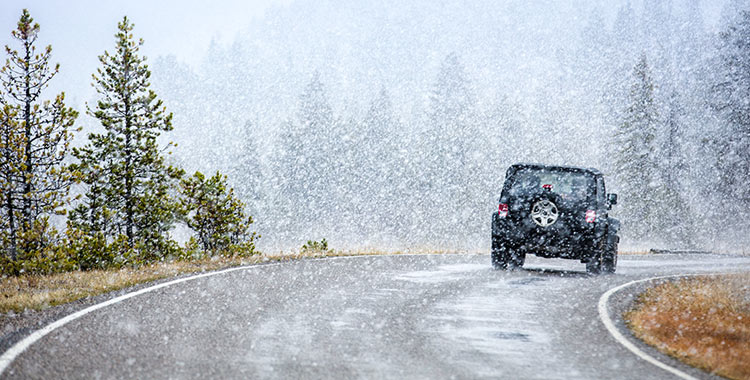Service
Feature
How to Winterize Your Car
The change in seasons is a good time to review the condition of your vehicle and prepare it for winter.

Articles from CARFAX Canada on how to service your car
-
Seven Easy Steps to Get Your Car Ready for Spring
The harsh Canadian winters can really leave their mark on a car. Here are seven steps to help your car recover from winter and get it ready for spring. -
Car Oil Change Guide
This guide provides all the info you need to know including when to change your car’s oil, what kind of oil you to use, and where to get it done if you’re not comfortable doing it yourself. -
The Ultimate Vehicle Maintenance Checklist and Guide
Read CARFAX Canada's maintenance guide and see the car maintenance checklist that keeps your car running smoothly. -
A Monthly Safety Checklist for Your Vehicle
Giving your vehicle check-ups will help you catch any mechanical issues before they get worse and ensures that everything’s running in tip-top shape. -
Vehicle Maintenance Logs: Tips on Tracking Your Service History
Whether you’re leasing or buying a used car, it’s a substantial investment. It takes regular upkeep in order to ensure your car stays in great condition. -
How to Check Your Tire Pressure
You depend on your vehicle’s tires to get you to and from your destination. They are the parts that keep you stable, steady and moving out on the road so it makes sense that you should check on them regularly. -
What to Know About Winter Tires
Everything you need to know about snow tires. Learn the difference between all-season tires and winter tires, which are the best for your car, and how to store your snow tires. -
Six Ways to Increase the Resell Value of Your Used Car
Here are some things you can do to boost and maintain the resale value of your used car. -
Car Repairs: Is Fixing My Car Worthwhile, or Is It Time for a Replacement?
Repairs or sell? What car owners should consider when their repair bills seem to be increasing. -
How You Can Check For Auto Recalls
Unfixed recalls are more common than you may think. In fact, 1 in 6 vehicles that have been checked for a recall have reported at least one. Recalls can range from malfunctioning airbags to electrical issues that can cause a fire, which is why checking your current vehicle for any unfixed recalls is important. -
How to Wash Your Car By Hand
Nothing makes your car look better than a good wash. It’s a critical step if you’re selling your used car, but even if you're not, it's important for good maintenance and to help you enjoy your ride. -
CARFAX Canada Car Tire Guide
Car tire problems? Do you have the best winter tires? What about car tire tread wear? Get the info you need from CARFAX Canada. -
How to Prepare a Car for Long-Term Storage
Storing a car for the winter, or even longer, can damage it if you don't do it right. Here are steps to store your car safely. -
How to Jump Start a Car
The next time you come across a battery that just won’t start, here’s a guide you can follow to safely boost a car using jumper cables. -
DIY Tire Inspections – How to Check Tire Tread, Tire Pressure and More!
Learn how to quickly check your tire tread and pressure to keep you safe on the road -
How to Winterize Your Car
The change in seasons is a good time to review the condition of your vehicle and prepare it for winter. -
How to Change a Flat Tire
As a driver, one of the best things you can learn is how to change a flat tire. -
How to Increase Fuel Efficiency in Your Car
As the cost of fuel increases, the focus on fuel efficiency continues to be top of mind for drivers and car buyers. Though buying a car with great fuel efficiency is a great way to lower how much gas you burn, the National Resources Canada has released information about how to reduce your average fuel consumption. -
How to Check a Used Car For an Odometer Rollback
Odometer fraud is a big problem for used car buyers. Here is how to check for an odometer rollback. -
Check Your Car Maintenance History Online
Find out how you can see the maintenance history of your car online. -
How Much Fuel Will Your Car Consume?
For many consumers, fuel consumption is a major consideration in the used car purchasing process. With the cost of rising gas prices, people want to know how much they can expect to pay for fuel each time they stop to fill up at the gas station.
